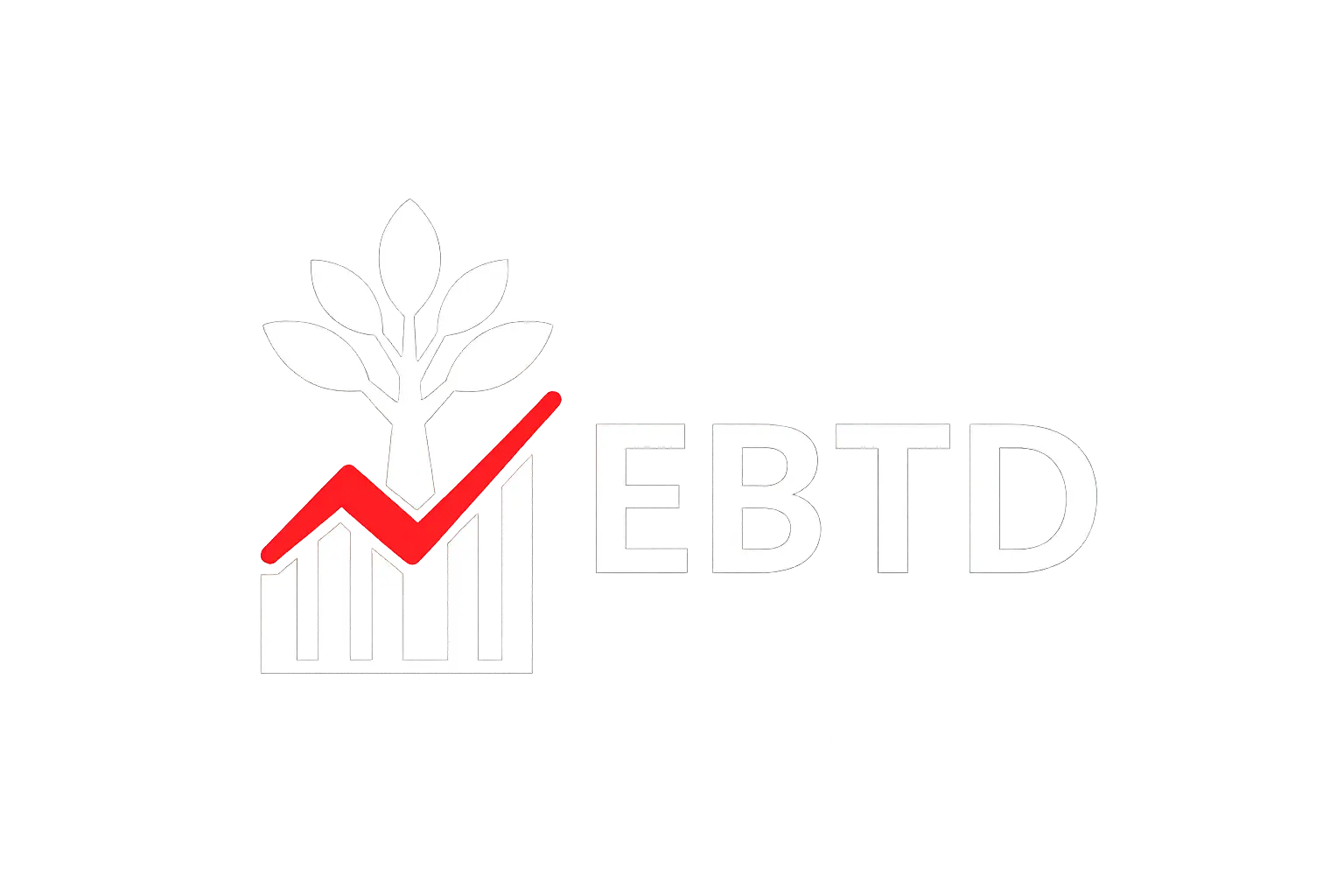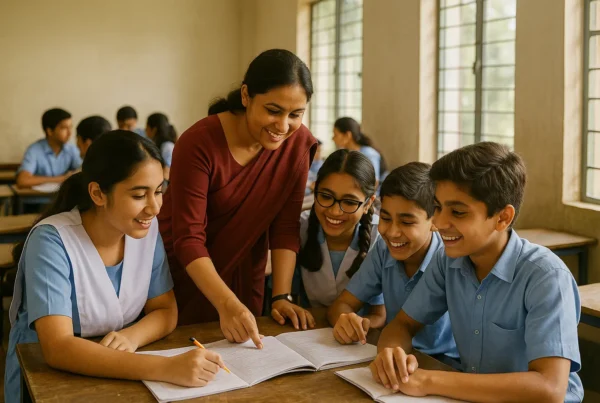Teacher Training in Bangladesh: Progress at Scale, but Are Teachers Prepared for the Classroom?
Across classrooms in Bangladesh, millions of children return each day to schools led by teachers who have undergone training, earned certifications, and attended workshops. Yet many still struggle to help students meet even the most basic learning outcomes. Why does this disconnect persist?
Over the past year, new evidence has emerged from national programs and independent studies that shine a spotlight on both the achievements and the persistent challenges facing teacher training in Bangladesh. From large-scale government initiatives to local classroom-level research, the findings reveal a complex picture: while access to training is growing, its depth, quality, and practical impact on teaching remain uneven.
This blog offers a synthesis of the current state of teacher training and professional development (TPD) for primary and secondary education in Bangladesh, drawing exclusively from recent evidence and official evaluations. It concludes with a summary of the recommendations made by researchers, institutions, and policymakers to strengthen the system.
Primary Education: Scaling Up with Mixed Results
Bangladesh’s Fourth Primary Education Development Programme (PEDP4) has enabled more than 500,000 primary teachers to receive training, including through the Diploma in Primary Education (DPEd) and digital platforms like Muktopaath. As of 2023, over 230,000 teachers had completed online courses in more than 50 subjects.
However, a 2024 baseline study in Kurigram and Jamalpur districts found that just 10–22% of Grade V students were achieving expected learning outcomes in core subjects. Although teachers had adequate subject knowledge, they lacked the pedagogical skills and confidence to address diverse learning needs, particularly in remedial instruction. Digital tools were underused, and mental health support for teachers was largely absent.
An evaluation of the revised DPEd program by the National Academy for Primary Education (NAPE) and the EU reported positive uptake of student-centered teaching methods. Still, the study pointed to cognitive overload from long training hours, limited classroom practice (15–18 days), and gaps in mentorship during internships. Recommendations included rebalancing theory and practice, enhancing ICT infrastructure, and improving financial support for trainees.
Secondary Education: New Curriculum, Old Challenges
With the rollout of a new competency-based curriculum, the secondary education sector is undergoing a transition supported by the Learning Acceleration in Secondary Education (LAISE) program. This USD $300 million initiative aims to train 15,000 secondary teachers, expand blended learning, and reduce learning loss from the pandemic.
Yet teachers face systemic constraints. A 2025 study found that many secondary educators report excessive workloads, limited CPD access, and large class sizes that impede individualized instruction. Administrative burdens and infrastructure gaps further reduce time for lesson planning and professional reflection.
Digital platforms are playing a growing role in bridging these gaps. The Shikkhok Batayon (Teachers’ Portal) has over 600,000 educators engaged in peer learning and content sharing. Research shows that participation in online training, especially when coupled with modest incentives, leads to measurable improvements in teaching quality and reduces burnout.
The Way Forward: Recommendations from the Field
Recent evaluations and research findings highlight the need for deeper, more systemic reforms in how teacher training and professional development are designed, delivered, and sustained. While individual training programs have shown promise, their impact remains limited without broader structural shifts. The following evidence-based recommendations reflect the priorities identified by practitioners, education researchers, development partners, and government evaluations:
1. Expand Practice-Based Learning
- Reconfiguring pre-service training to allocate significantly more time—up to 115 days—for supervised classroom teaching.
- Strengthening internships through placements in well-functioning schools with qualified mentors.
- Introducing structured practicum frameworks that include feedback tools, observation rubrics, and reflective logs.
- Training mentors and PTI instructors to support guided school-based experiences effectively.
2. Focus on Practical Pedagogy
- Training content should prioritize practical application over theoretical lectures.
- Modules on competency-based learning, remedial instruction, formative assessment, and inclusive practices should be integrated into both pre- and in-service programs.
- ICT should be embedded not just as a digital skill but as a tool for pedagogy across subjects.
- Subject-specific training tracks should ensure alignment with curriculum and learner needs.
3. Establish Structured, Career-Long CPD Systems
- National CPD standards should define expected competencies and development milestones across teaching careers.
- CPD offerings should include induction, mid-career, and advanced levels, with recognition and certification built into teacher progression.
- Schools should foster local CPD through peer learning, coaching, and regular professional reflection cycles.
- CPD engagement should be mandated and tracked, linked to appraisals and promotions.
4. Support Wellbeing and Motivation
- Expanding access to counseling and mental health support within school systems.
- Introducing recognition systems and performance-based incentives, including stipends or awards for CPD participation.
- Revisiting school-level teacher distribution and workload policies to ensure manageable teaching schedules.
- Building leadership capacity to foster supportive school environments for staff development.
5. Invest in Digital Equity and Infrastructure
- Expand ICT infrastructure and reliable internet connectivity to underserved schools.
- Provide offline-enabled versions of CPD content and increase mobile-based delivery for flexibility.
- Offer subsidized devices and access points for rural teachers and female educators.
- Localize content in Bangla and integrate accessibility features for diverse user needs.
Conclusion
Bangladesh has made significant progress in scaling teacher training. The next frontier is ensuring that this training is practical, continuous, and equitably accessible. As the country implements a new curriculum and aims for higher learning outcomes, the quality of teacher preparation and support will be decisive.
The evidence is clear: a systematic shift toward structured, practical, and teacher-centered development is essential. With aligned investment, infrastructure, and institutional reform, Bangladesh can strengthen the professional capacity of its teachers—and in doing so, strengthen the learning of every child in its classrooms.
Stay connected with the latest insights, research, and resources by subscribing to our monthly newsletter. Join our growing community of educators, policymakers, and development partners working to make teacher development more impactful, equitable, and evidence-driven. 👉 Sign up here
Reference List
- Save the Children Bangladesh. (2024). Empowering Children through Education (ECE) Project – Baseline Assessment Report. Dhaka: Save the Children.
- National Academy for Primary Education (NAPE) & European Union. (2024). Assessment Report on the Revised Diploma in Primary Education (DPEd).
- World Bank. (2023, September 22). Bangladesh: $300 Million to Accelerate Learning Recovery for Secondary Students. [Press release].
- Haque, Md. Tajul. (2025). "Exploring Secondary Teachers’ Job Difficulties in Bangladesh: A Qualitative Study." International Journal of Education & Literacy Studies, 13(2), 84–91.
- Biswas, K., et al. (2025). "Improving Teacher Quality through Online Training: Evidence from Bangladesh." Journal of Economic Behavior & Organization, Vol. 229, 1–20.
- Afroz, R., Siddique, N., & Parvin, R. (2024). "Continuing Professional Development in Higher Education in Bangladesh: Challenges and Possibilities." Journal of Education and Learning Research, 1(2), 12–23.
- The Business Standard. (2025, August 3). ADB provides $150m to improve technical and vocational training in Bangladesh.
- UNESCO-UNICEF Gateways. (2025, September). Public Digital Learning Platforms: Bangladesh’s Experience with the Teachers’ Portal.
- Aspire to Innovate (a2i), ICT Division, Government of Bangladesh. (2025). Shikkhok Batayon (Teachers’ Portal): Annual Engagement Report.
- KholaBoi. (2025, July 12). শিক্ষকদের পেশাগত উন্নয়ন: বৈশ্বিক অভিজ্ঞতা ও বাংলাদেশের করণীয়.
- Education Watch (CAMPE). (2024). The Role of Teachers in Transforming Education: Preliminary Study Findings for 2025 Report. Campaign for Popular Education (CAMPE).
- UNESCO. (2024). UNESCO-Hamdan Prize for Teacher Development: Finalists 2024 – Good Neighbors Bangladesh Profile.
- Muktopaath. (2025). Online Learning Analytics Summary for Teacher Professional Development Courses. Aspire to Innovate (a2i).





